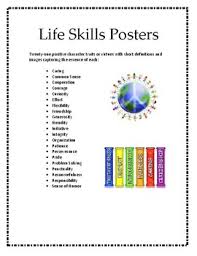Student Contributor: K. Coan
 Kovalik’s lifelong guidelines and life skills include anything and everything that one can use over the course of their lives to help form the foundation for positive, valued relationships. The particular skills your class focuses on can be exactly what’s listed, or can be created collaboratively by your classroom according to the skills that they find most important. These life skills also help shape the culture of the classroom along with a creating a pathway to good classroom leadership and encourage reflective thinking.
Kovalik’s lifelong guidelines and life skills include anything and everything that one can use over the course of their lives to help form the foundation for positive, valued relationships. The particular skills your class focuses on can be exactly what’s listed, or can be created collaboratively by your classroom according to the skills that they find most important. These life skills also help shape the culture of the classroom along with a creating a pathway to good classroom leadership and encourage reflective thinking.
Life Skills should be used to uplift a classroom and promote positivity and ultimately lead to positive relationships through whole class participation in order to create this classroom culture. This tool can be used anywhere from acknowledging peers in a community circle, discussing with a partner what skill is most important to them, and even creating a poster or writing about their preferred life skill. This tool can be used in many more ways, with the sole purpose of educating students about what these life skills really mean along with why they are so important to learn and practice throughout their lives.
I have had a few run-ins with these life skills in our classroom management course. This is where I learned not only about the importance of this tool, but also the long lasting impact these life skills can have, especially when acknowledging a peer with a life skill you feel they possess. I personally felt appreciated and uplifted after hearing what another peer had to say about me in such a positive manor. Using this tool in this way can help many people especially on days when they might need it the most.
I chose to put this tool in the preventative phase because I believe these life skills can add to the classroom culture from the first day on and create almost an expectation from both the students and the teacher in the classroom. Since these life skills encourage positivity in the classroom, which includes the way that we should speak and interact with one another, is one reason why I consider this to be a preventative tool. Theoretically speaking, if we all respect one another and lay expectations out at the beginning of the school year, student conduct and behavior will follow these guidelines due to the awareness of the reality without such implications.
I believe this tool fits best with the collaborative theory of influence because it is used mutually by teachers and students in order to create a positive and effective classroom. In order to achieve this, it has to be a group effort between the two in order to establish the desired classroom environment. In this case, both the teachers and students are responsible for creating such an environment that everyone can thrive in.
More Information –
Tool Source: The Kovalik article from day 13
https://static1.squarespace.com/static/54e3cb2de4b015ce3b5f88f4/t/55e7b9b4e4b037787a6f4892/1441249716273/Highly+Effective+Teaching.pdf

